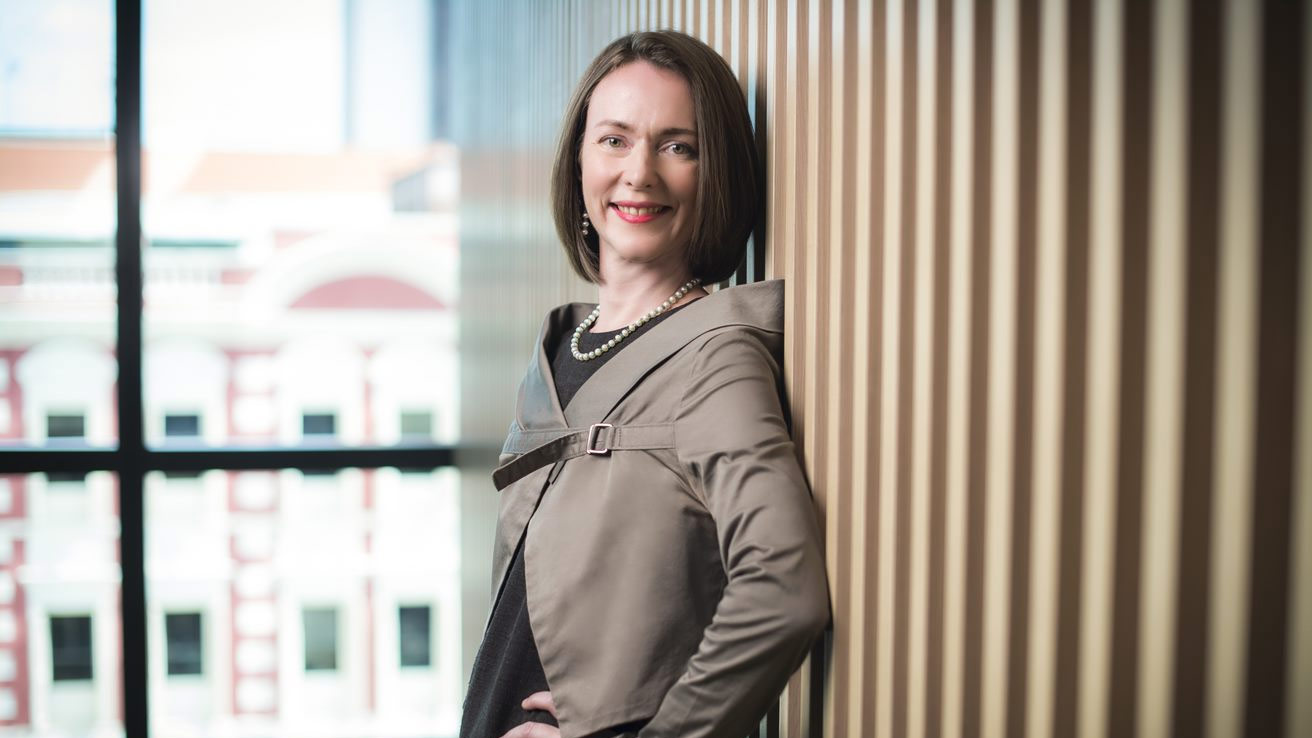
Some minor adjustments, of course, had to be made. Instead of an on-campus induction experience for the students, the July 2020 cohort would have to make do with a virtual induction conducted online.
"We had planned to offer them an immersive first three or four days on campus, so that they could meet one another in person, have that shared ‘cohort feeling’ before they proceeded with their online schedule independently," said Pascale Crama, Associate Professor of Operations Management at LKCSB and Academic Director, Blended Programmes.
"We look forward to the next on-campus segment [planned for January 2021] to welcome our students here," Associate Professor Crama said, adding that on-campus interactions would only take place if approved by the authorities.
In the blended MiM programme, over the course of 18 months, students need to take eight core modules and eight elective modules.
Rather than presenting traditional instruction in a recorded format, blended learning entails online course materials and in-class activities delivered in bite-sized segments. The range of experience may also be more diverse, with students accessing interviews of industry and subject-matter experts sharing their knowledge.
While the content of the programme is very similar to that for students in the full-time programme, the fresh mode of delivery means that students in the blended cohort need to rethink what learning and participation at a Master’s level means to them.
There are adjustments needed for both students and faculty to make the blended experience work at an optimal level for all parties.
For students, having class content available online and on demand means greater flexibility in balancing work, life and other commitments and school. They can also learn at their own pace and decide how much to bite off and digest, at any given time, so to speak.
"Some classes will still be on schedule, with interactivity via videoconferencing, but now students can afford more flexibility in learning when they want, where they want and in the amount of hours they want," she said. "We empower the student, but each student needs to have that discipline too."
Educators work with learning designers, and Associate Professor Crama noted the need to think about how to split lessons into smaller chunks, how to engage with students and how to get them to produce work that demonstrates that they have mastered a concept or skill taught in class.
She recalled how one faculty saw the advantage of a blended class, particularly in teaching a financial concept that employs the same formula year in, year out.
"He said that the formula for net present value doesn’t change, so he can now put that into a video format and have students watch it. So in live online discussions, he can now focus on taking questions, sharing examples and correcting misunderstandings," Associate Professor Crama said. "So instead of delivering information, he can focus more on the interaction with students."
One positive to have come out of the preparations for the blended programme is that the classes were already well suited to move online once the pandemic took hold.
"We ran some of the classes that we had already developed on trial," said Associate Professor Crama.
"So we are happy to report that not only did they go well in the full-time programmes where we deployed them, they also worked well in the current situation, being redeployed or repurposed to support the enforced online teaching. For at least some faculty, they have been very handy."
According to Associate Professor Crama, these faculty included Rick Smith, Professor of Strategic Management (Practice), and Ilya Cuypers, Associate Professor of Strategic Management, who both used some of the materials they had developed to teach their classes during the circuit-breaker period.
Abhijeet Vadera, who is Associate Professor of Organisational Behaviour and Human Resources at LKCSB, co-developed a blended class on Managing People & Organisations, and said that his own experience teaching during the circuit breaker had opened his eyes to how class participation online differed from on campus.
"What technology has provided, which I really love, is that it gave [more] people a chance to speak up. I’ve had students who had never spoken up in my class before giving me amazing comments through the online group chat or private messages. I could then share the comment with the class and we could have a deeper discussion," he said.
Associate Professor Crama agreed that blended learning would take away some barriers to class participation, noting that it reduces the fear of public speaking or any other reluctance, and that students can even take time to marshal their thoughts and participate in online forums some time after class.
While coping with the pandemic and its consequences was unexpected, the good news for the blended MiM programme is that it has increased the familiarity with this form of teaching and learning.
"The default option to learn something used to be going to school, sitting down in a classroom, and listening and taking notes, and so on," said Associate Professor Crama. "But this [pandemic] has now forced people to think about working
and studying in a very different way."
"Students now know they can mix and match, have some face-to-face interaction and some online interaction, and that there are benefits and downsides to both that are manageable. And that they continue to receive the same high quality education, knowledge and skills, that they would have otherwise gotten [from traditional education]."
Associate Professor Crama added that she herself had taken two key lessons from the experience of launching the blended programme in the midst of a pandemic.
"First, that it is indeed a lot of work to start a new programme!" she said. "And second, that it is important to be flexible. Covid-19 was obviously unexpected, and it required managing many changes [to be able to deliver the programme
as planned]."